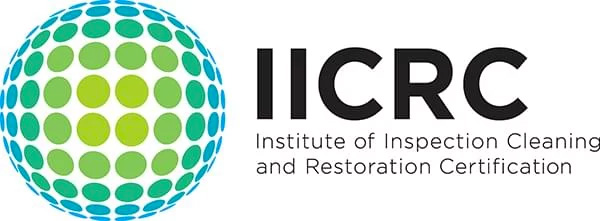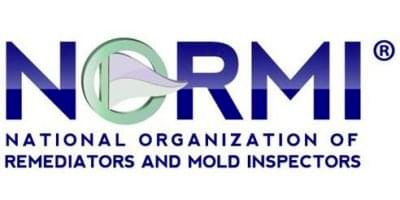Will Opening Windows Reduce Mold?
Mold growth in homes is a prevalent issue, particularly in areas with high humidity or during seasons when moisture levels tend to spike. The presence of mold not only degrades the aesthetics of a home but can also pose serious health risks, including allergies, respiratory problems, and other illnesses.
A common recommendation for preventing mold growth is to increase ventilation by opening windows. But is this advice effective?
Understanding Mold
One kind of fungus that grows well in warm, humid conditions is mold, which can develop both indoors and outdoors. Mold spores can settle and grow on a variety of surfaces where moisture is present, like bathrooms, kitchens, and basements. Mold spores are always in the air.
Mold requires three main things to grow: moisture, a suitable surface (or substrate), and a favorable temperature. Of these, moisture is the most critical factor. Therefore, controlling moisture levels inside a home is key to preventing mold growth.
What Should I Do When I Find Mold In My Home?
Discovering mold in your home can be unsettling, but it's important to address it promptly to prevent health risks and further spread. Here are the steps you should take when you find mold in your home:
Assess the Extent of the Mold

- Size Matters: If the mold covers a small area (less than 10 square feet), you might be able to clean it yourself. Larger infestations typically require professional remediation.
- Identify the Source: Before cleaning up the mold, identify and fix the source of moisture that allowed the mold to grow. This could be a leaky pipe, condensation, or inadequate ventilation.
Cleaning Small Areas of Mold
- Safety First: Wear protective gear, including gloves, goggles, and an N95 respirator mask, to avoid inhaling spores or coming into direct contact with mold.
- Choose the Right Cleaner: For non-porous surfaces, such as tile and glass, use a mixture of water and detergent. Avoid using bleach as it's often ineffective at penetrating surfaces to kill mold at the root. For porous materials like drywall, it might be necessary to discard the material if it's heavily infested.
- Dry Thoroughly: After cleaning, ensure the area is dried completely. Remaining moisture can lead to regrowth of mold.
When to Call Professionals
- Large Infestations: For extensive mold problems, or if the mold returns after initial cleaning, it's wise to hire a professional mold remediation service. They have the tools and training to safely and effectively remove large infestations.
- Health Risks: If you have health concerns or allergies that may be exacerbated by exposure to mold, consider professional assistance even for smaller mold problems.

- Structural Damage: Mold can sometimes cause structural damage to homes, particularly when it invades wall cavities and wood supports. In such cases, a professional can assess the extent of the damage and perform necessary repairs.
Prevent Future Mold Growth
After addressing the immediate mold issue, taking steps to prevent future growth is crucial:
- Maintain Low Humidity: Keep indoor humidity levels below 60% (ideally between 30% and 50%) using dehumidifiers and air conditioners.
- Ensure Proper Ventilation: Use exhaust fans in high-moisture areas like bathrooms and kitchens. Regularly open windows and doors when conditions allow, to improve indoor air circulation.
- Regular Inspections: Routinely check your home for signs of moisture issues or mold growth, particularly in prone areas such as basements, attics, and under sinks.
The Role of Ventilation
One of the most important factors in controlling moisture in indoor environments is ventilation. Ventilation helps lower the amount of moisture in the air, which would otherwise condense on surfaces and promote the growth of mold.
It does this by enabling air to circulate. One of the easiest ways to improve ventilation in a house is to open the windows.

When you open a window, you allow outside air to enter and mix with the indoor air. This can help equalize the indoor and outdoor humidity levels, potentially lowering the indoor humidity and making the environment less hospitable to mold.
Factors to Consider
However, the effectiveness of opening windows to reduce mold depends on several factors:
- Outdoor Humidity Levels: If the air outside is more humid than the air inside, opening a window can actually increase indoor humidity levels. During rainy seasons or in naturally humid climates, opening windows might contribute to mold growth rather than prevent it.
- Air Circulation: Effective ventilation requires not just opening a window but ensuring that there is good airflow across the room. Strategic placement of fans can help circulate air more effectively when windows are open.
- Temperature Differences: In colder climates, opening windows to reduce humidity can lead to significant heat loss and higher energy costs. Cold surfaces can also lead to condensation when warm, moist air hits them, potentially worsening mold problems in certain areas like near windows.
Alternatives and Additional Measures
While opening windows can be part of a mold prevention strategy, it should not be the only method used. Here are some additional strategies to consider:
- Dehumidifiers: In areas with high humidity, using a dehumidifier can be more effective in controlling indoor moisture levels than simply opening windows.

- Proper Insulation and Venting: Ensuring that your home is well-insulated and that areas like bathrooms and kitchens are properly vented to the outside can reduce moisture accumulation.
- Fix Leaks: Addressing leaks in pipes, roofs, and windows as soon as they are noticed can prevent water from accumulating and providing a breeding ground for mold.
- Routine Maintenance: Regular cleaning and maintenance of areas prone to moisture can prevent the buildup of conditions favorable to mold growth.
Conclusion
Opening windows can help reduce mold in some instances by improving ventilation and lowering indoor humidity levels. However, its effectiveness largely depends on external conditions such as the outdoor humidity.
For best results, this approach should be combined with other moisture control strategies such as using dehumidifiers, ensuring proper insulation, and maintaining good housekeeping practices. Ultimately, mold prevention is about controlling moisture.
Homeowners should assess their specific situation to determine the best combination of tactics to keep their homes mold-free, considering the unique challenges posed by their local climate and home design. For more information, contact Markham Services today!


